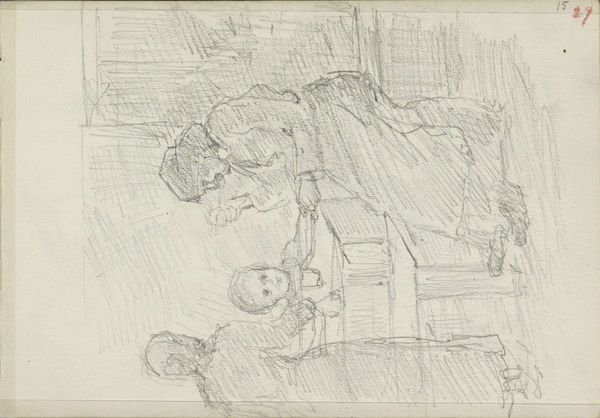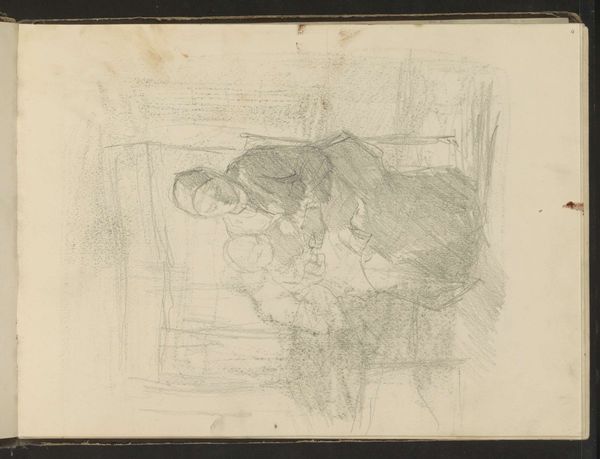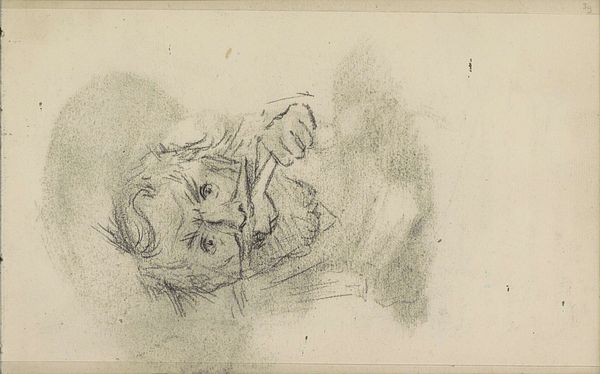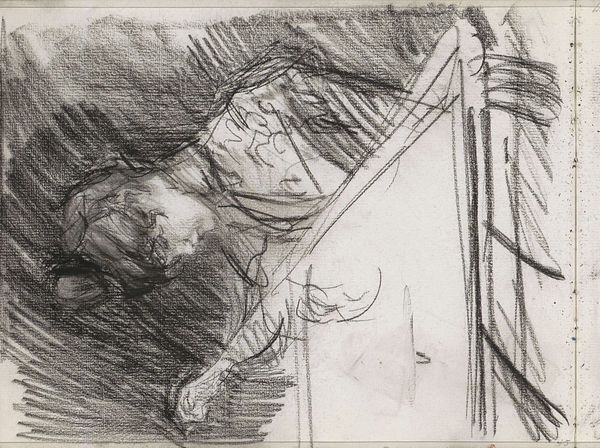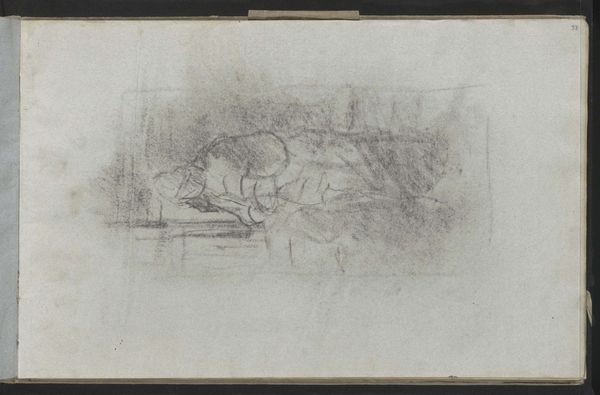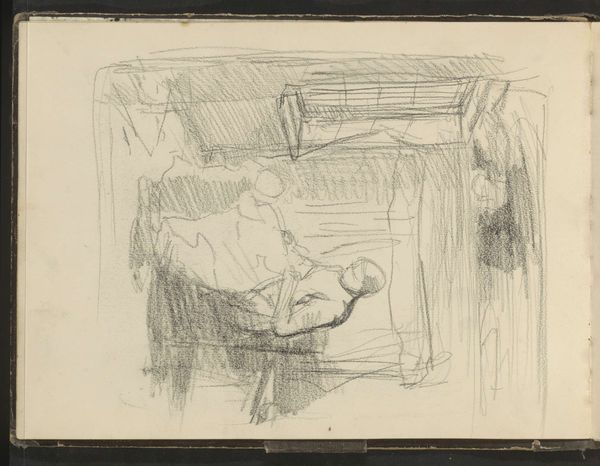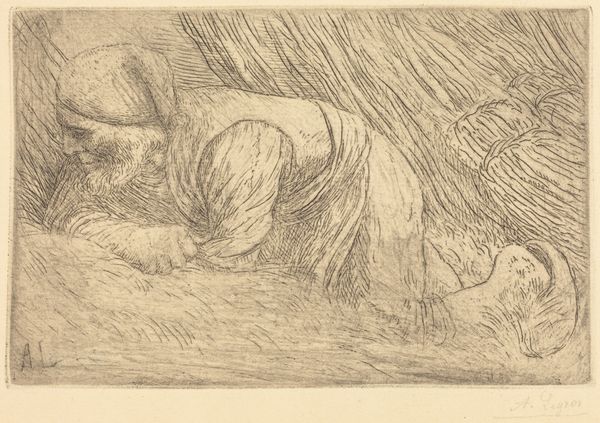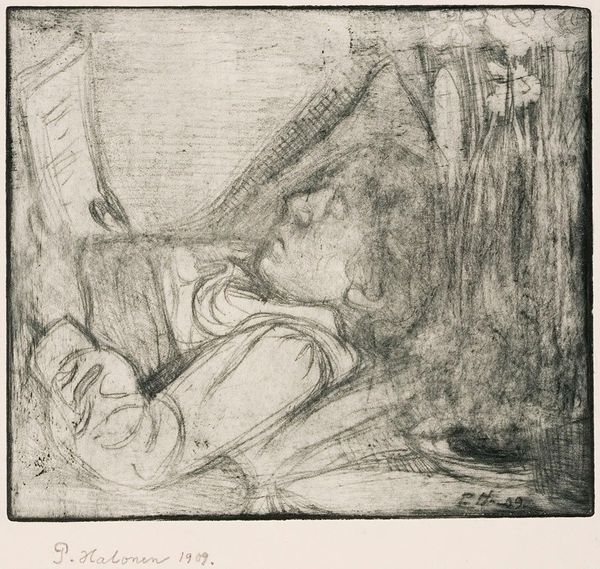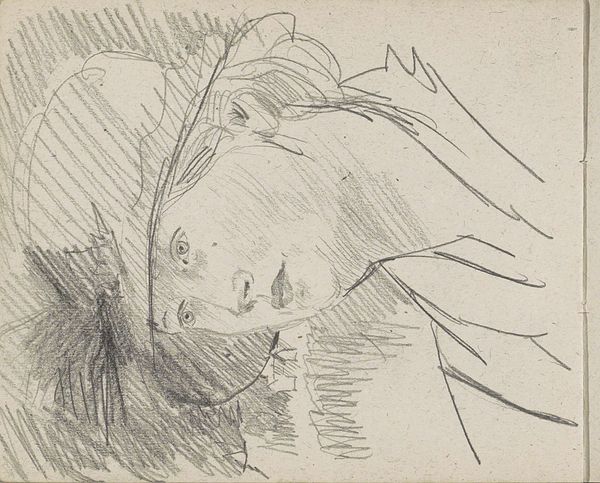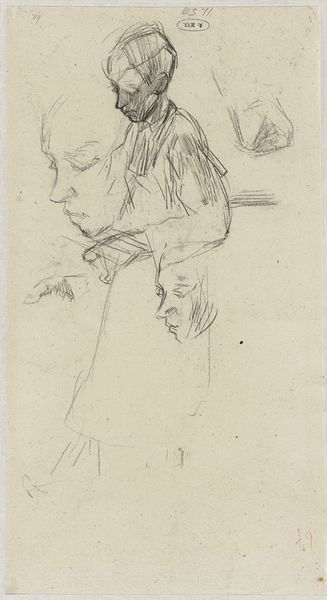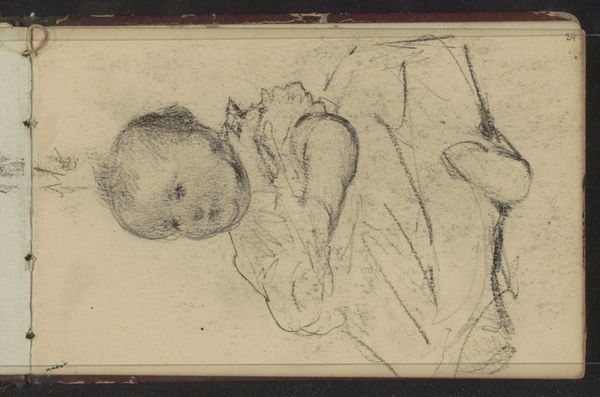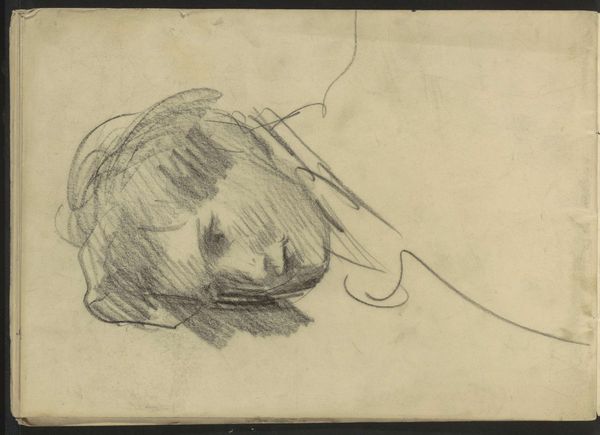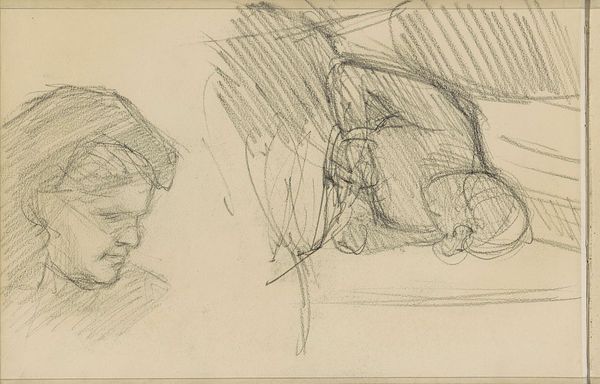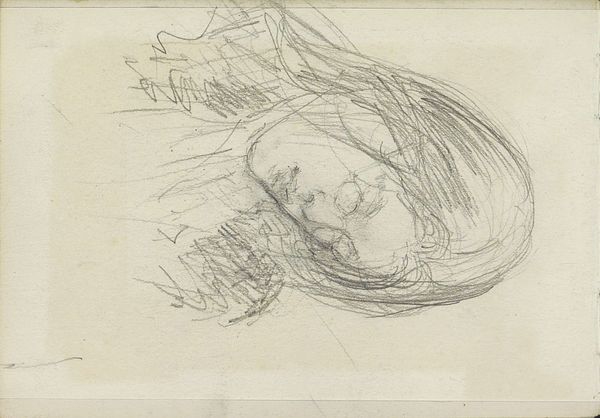
Copyright: Rijks Museum: Open Domain
Curator: Isaac Israels' pencil drawing, “Young Girl in the Window,” circa 1919, gives such a sense of immediacy. A light pencil work capturing what seems like a fleeting moment. What are your first impressions? Editor: The quiet intimacy is what strikes me first. A vulnerable moment of youth, framed—literally and figuratively—by the window. Windows often represent transitional spaces, a border between inner and outer worlds, innocence and experience. Curator: Interesting. Notice how the window isn’t just a frame; it's also a structural element. The solid rectangle creates this tension between the figure inside and the blurry world beyond. The composition, a clear interplay of form and line, pushes the girl slightly off-center. This adds dynamism to the image, preventing it from feeling static. Editor: Absolutely. Windows in art also signify voyeurism or observation. But I feel Israels steers clear of that. Instead, it feels more like a shared moment of introspection. What is this girl thinking? What's her place in the world? This feeling is heightened by her eyes as the artist renders them which are downcast and unreadable. She doesn’t perform for our gaze; rather, she’s simply… being. Curator: That links well with the drawing's impressionistic style—it's about capturing a fleeting essence. A sketchy work from his sketchbook allows you as the viewer to explore a sense of provisionality. It's a study in capturing light and form, rather than aiming for photo-realism. This emphasizes the artwork as the subjective perspective of the artist rather than a representation of reality. Editor: The bareness and incompleteness enhance this personal touch and universalize her experience at once. Every viewer might project her individual feeling into it and also read a symbol of a very certain period of time into it, considering it was made at the end of the Great War. I find that Israels here unlocks that symbol. Curator: Yes, it is fascinating to observe how its intrinsic, aesthetic properties give off this emotional impact. Editor: In effect, these simple shapes are not too distant from archetypical human experience. Curator: Beautifully put. This piece is a good example of an everyday subject portrayed using very strong methods of expression.
Comments
No comments
Be the first to comment and join the conversation on the ultimate creative platform.
